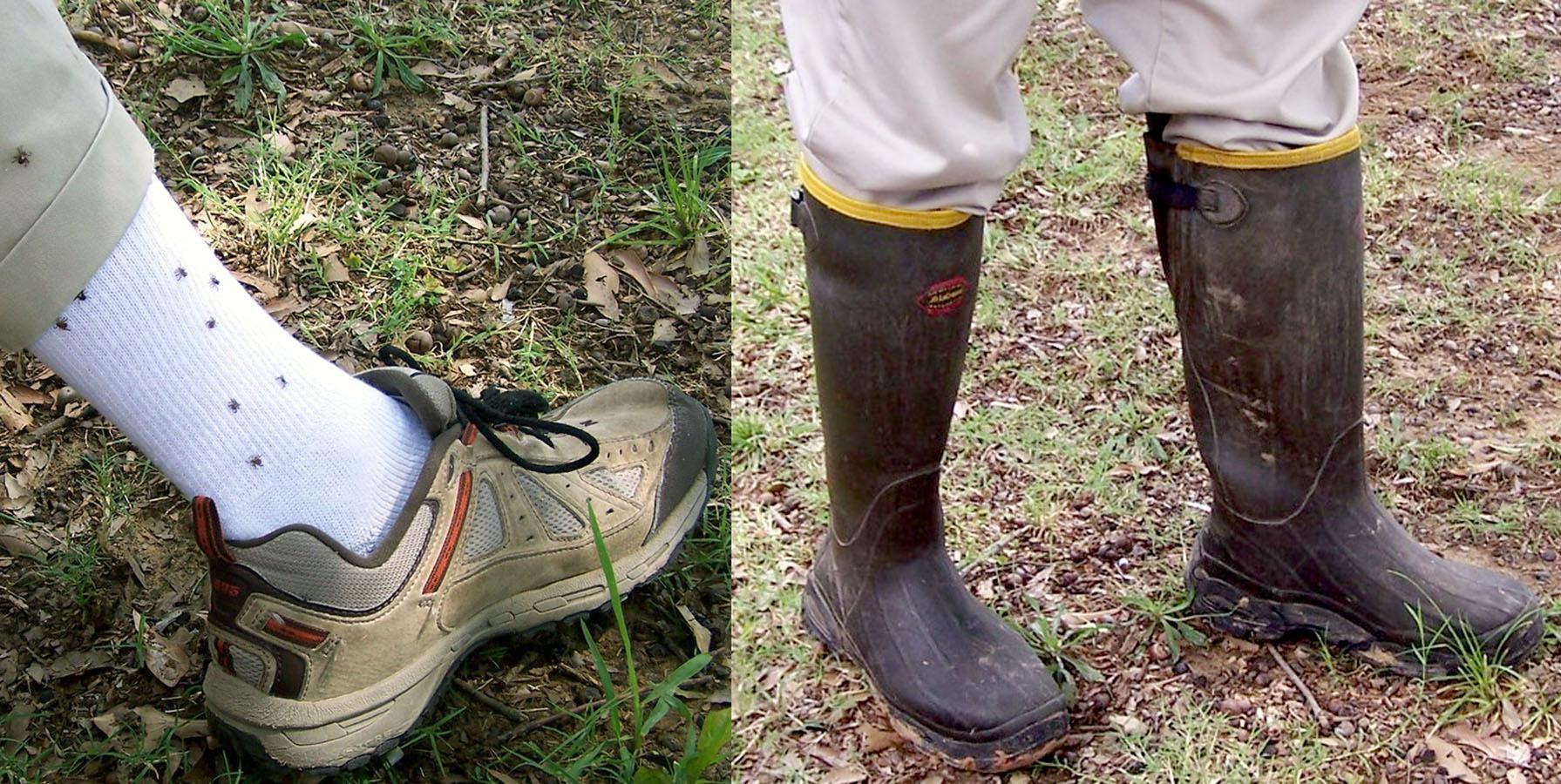Information Possibly Outdated
The information presented on this page was originally released on March 29, 2012. It may not be outdated, but please search our site for more current information. If you plan to quote or reference this information in a publication, please check with the Extension specialist or author before proceeding.
Protect family against tick-borne diseases
MISSISSIPPI STATE -- Before heading down the trail on a nature hike, take time to protect yourself and your pets from ticks and the diseases they carry, advised Mississippi State University experts.
“Ticks are blood-sucking parasites,” said Jerome Goddard, medical and veterinary entomologist with MSU’s Extension Service. “Several different species of ticks are common in Mississippi, and you can get diseases from them, so protect yourself. Not all ticks carry a disease agent, so you might get bitten 100 times and not get sick, but then again, you might contract a disease from the first tick you encounter.”
Ticks feed off blood from animal or human hosts, and as the ticks go through their life cycles, they can pick up diseases from these hosts.
“Ticks have four stages, beginning with the egg stage,” Goddard said. “They are called seed ticks when they’re in the larval stage, then nymph and adult. If they pick up a disease in an immature stage, you can get sick when they feed on you. Diseases are transmitted between various animal hosts and then to humans through the tick’s saliva.”
Despite research and scientific evidence, many myths persist about ticks.
“People say, ‘Wear a hat, because ticks will jump out of trees and get on your head,’ which is not true,” Goddard said. “Ticks climb up grass or other plant materials and latch onto a host when it walks by. Then they crawl around until they find a likely spot to feed – they seem to especially like to attach on the head or back of the neck.”
Folk remedies, such as covering a tick with petroleum jelly or fingernail polish, or using a lit match to get a tick to back out of the skin, are ineffective.
“Use tweezers and pull the tick out with firm, steady pressure,” Goddard said. “Remove the tick as soon as possible, because it generally takes two to three days for the disease agent to get into the body. Wash your hands and disinfect the bite to keep other germs from causing a secondary infection.”
Prevention is the best method of dealing with ticks, Goddard said.
“Avoid tick-infested areas as much as possible. Wear rubber boots and tuck your pant legs down in your boots. Don’t let your pants hang out – ticks can grab onto the pants and climb up,” he said. “If you don’t wear boots, you can tuck your pants in your socks if needed.
“Both of these strategies force the ticks to crawl up the outside of your clothes, where you can see them more easily. Use repellents – spray them on your skin or clothing to help repel ticks, and be sure to follow the label instructions,” he said.
Goddard advised people to make a note on their calendars when they have discovered a tick bite.
“If you get a strange illness, even up to a month after a tick bite, tell your doctor about your tick exposure,” he said. “Some antibiotics are specific for a certain disease, such as Rocky Mountain spotted fever, and other antibiotics won’t work. If you tell your doctor you have had tick exposure, the doctor will consider tick-borne diseases as possible diagnoses.”
Tick-borne diseases include Rocky Mountain spotted fever, ehrlichiosis, anaplasmosis, tularemia, babesiosis, Lyme disease and Southern tick-associated rash illness.
“Southern tick-associated rash illness, or STARI as it is commonly called, results in a big red ring around the tick bite,” Goddard said. “It looks similar to the Lyme disease rash, but experts think it is most likely a reaction to the tick’s saliva.”
Homeowners can reduce ticks through habitat modification.
“Keep your grass cut low and keep trees and bushes cut back around your house to let in air and sunlight, because ticks are sensitive to drying out,” Goddard said. “Keep the trees trimmed back around the house, and make sure you have sealed up any access points for animals to get in or under your house.”
Dr. Andrea Varela-Stokes, assistant professor at MSU’s College of Veterinary Medicine said pet owners can reduce tick exposure by using preventative measures on their pets.
“There are a variety of tick-control products available for pets, and many of these products also work to keep other ectoparasites, such as fleas, from feeding on pets,” she said. “Not only will this help reduce human exposure to potentially infected ticks, but it will also help prevent many of the same diseases that may be transmitted to their pets from ticks. Tick control will also help prevent the parasites or diseases that may be transmitted from other ectoparasites.”
Some products are available without a prescription, but a pet owner also can work with a local veterinarian to select a product that best meets the pet’s unique needs, she said.




